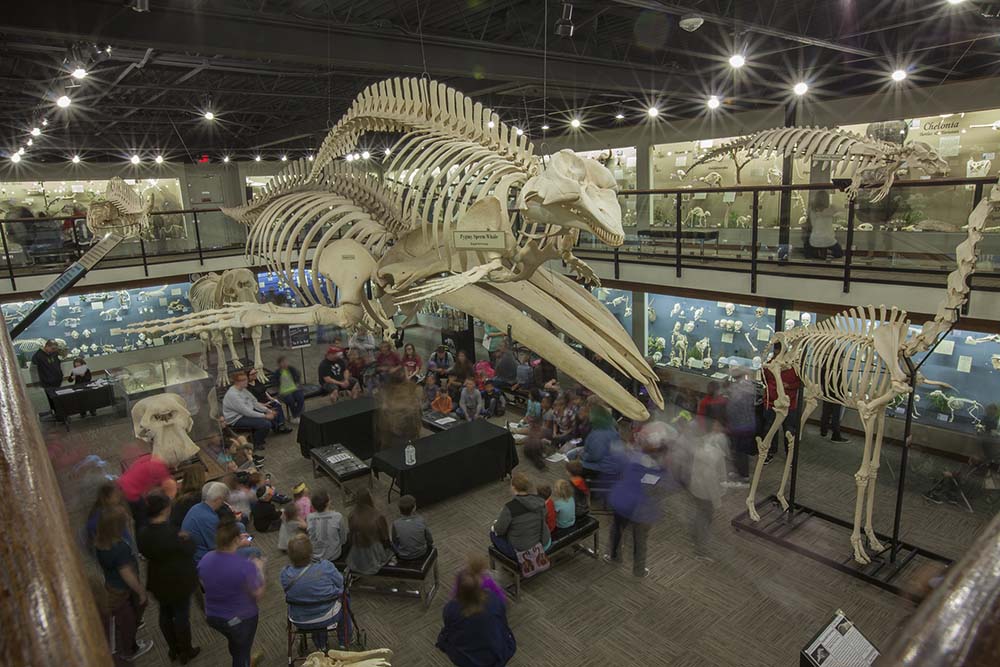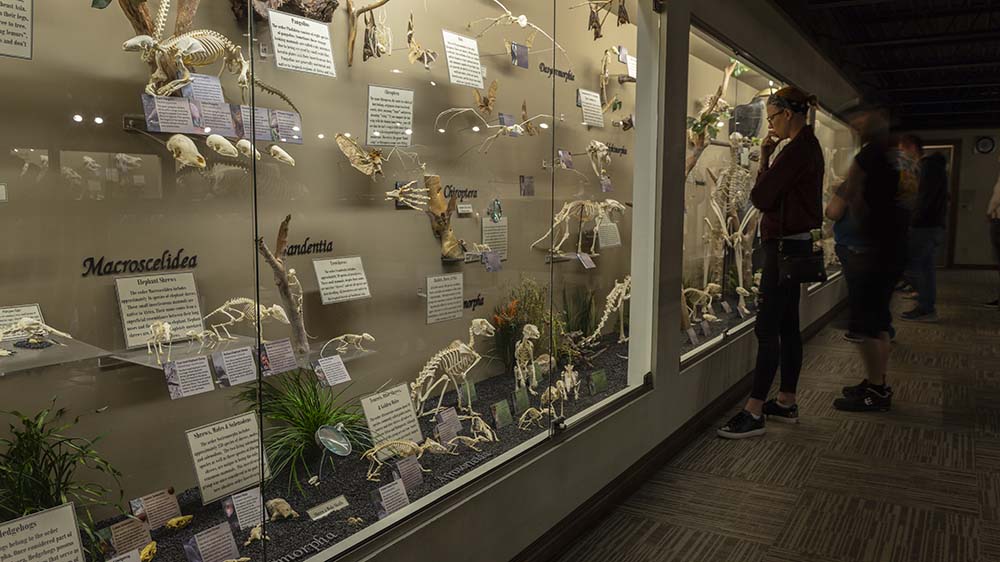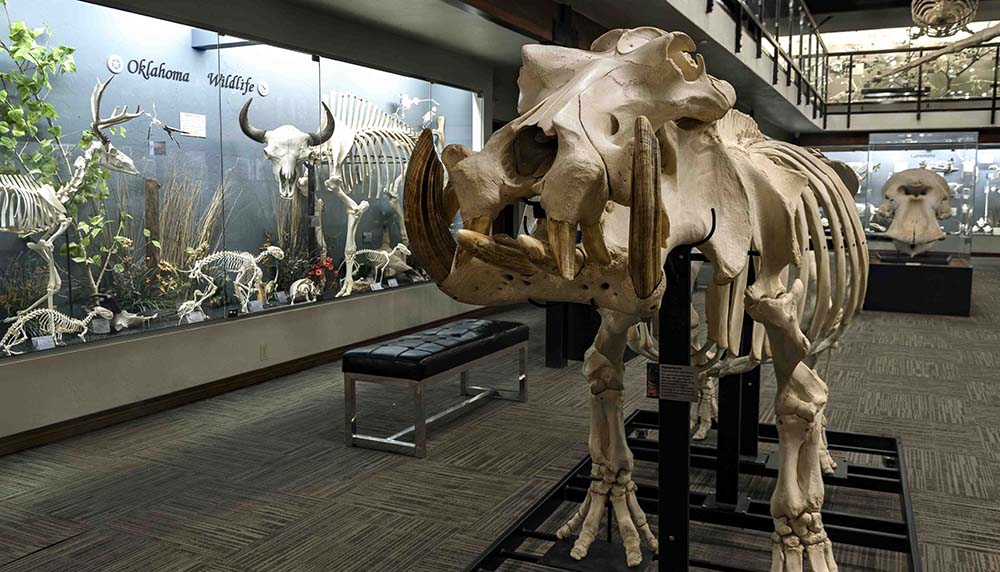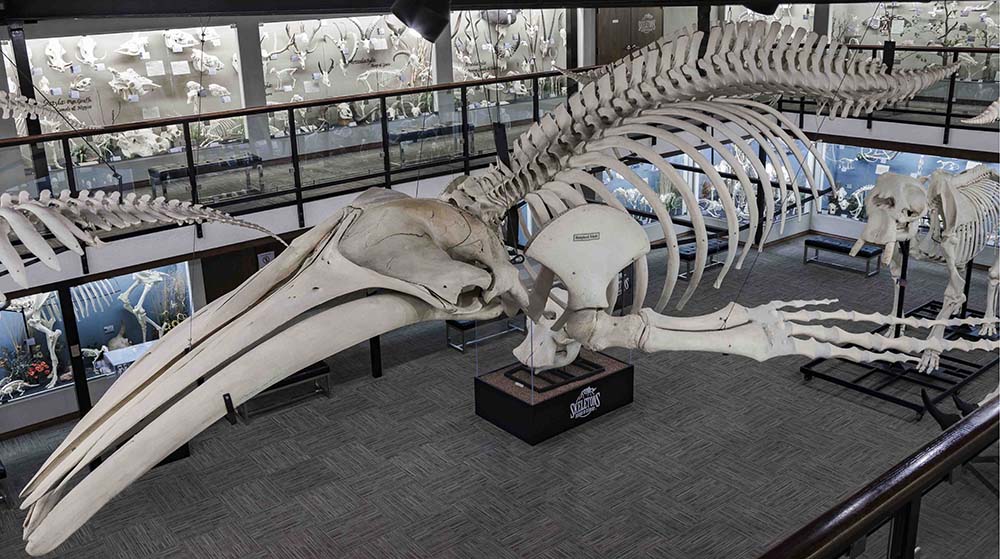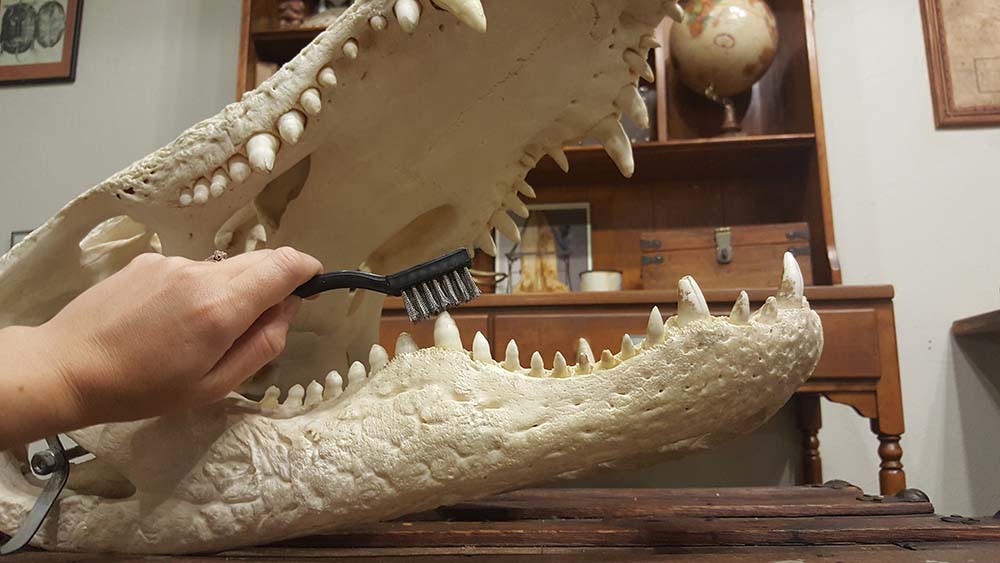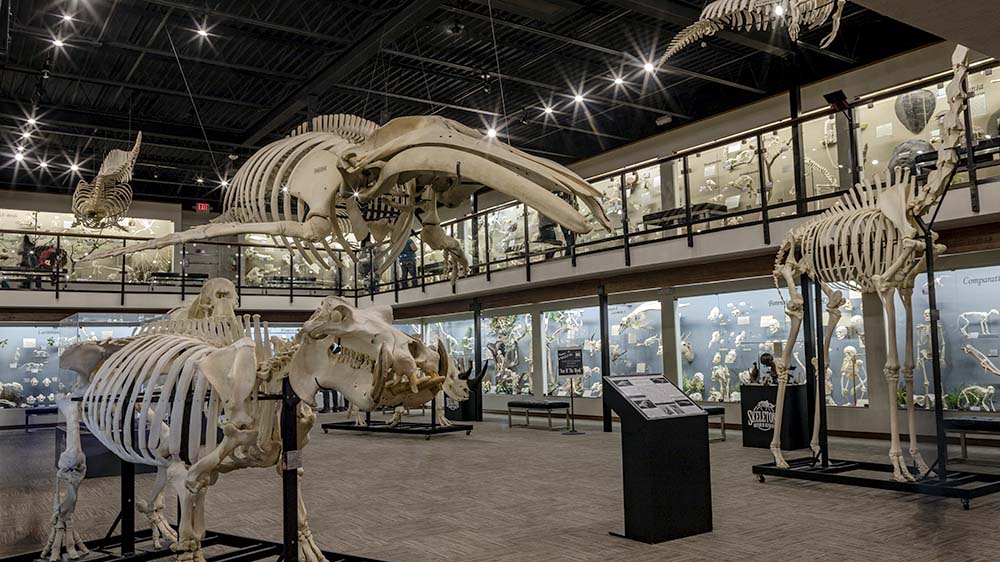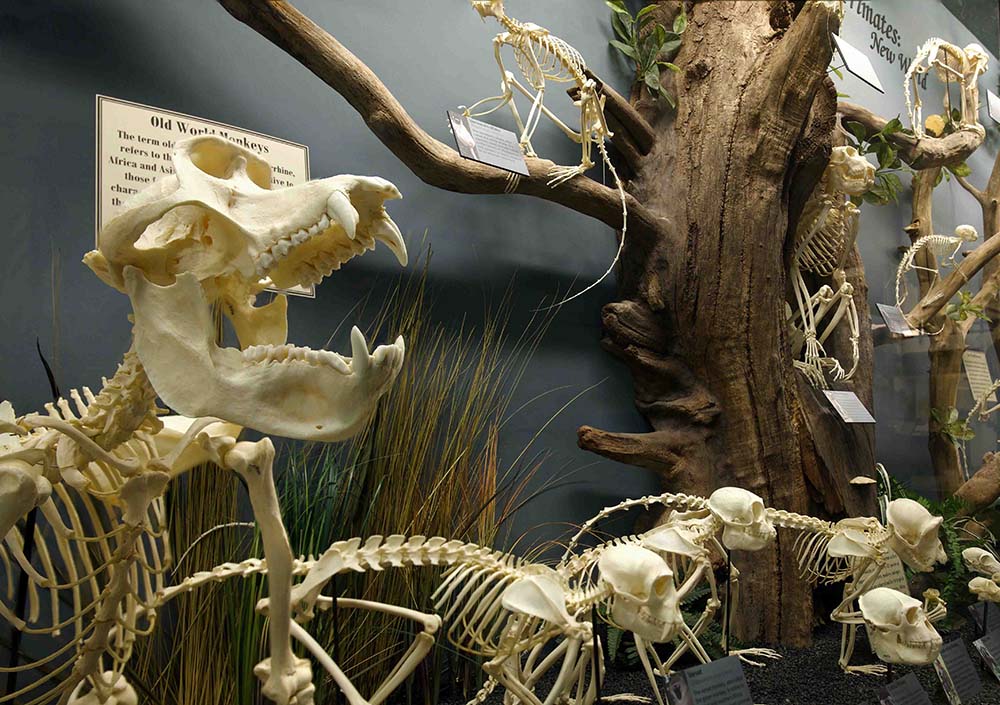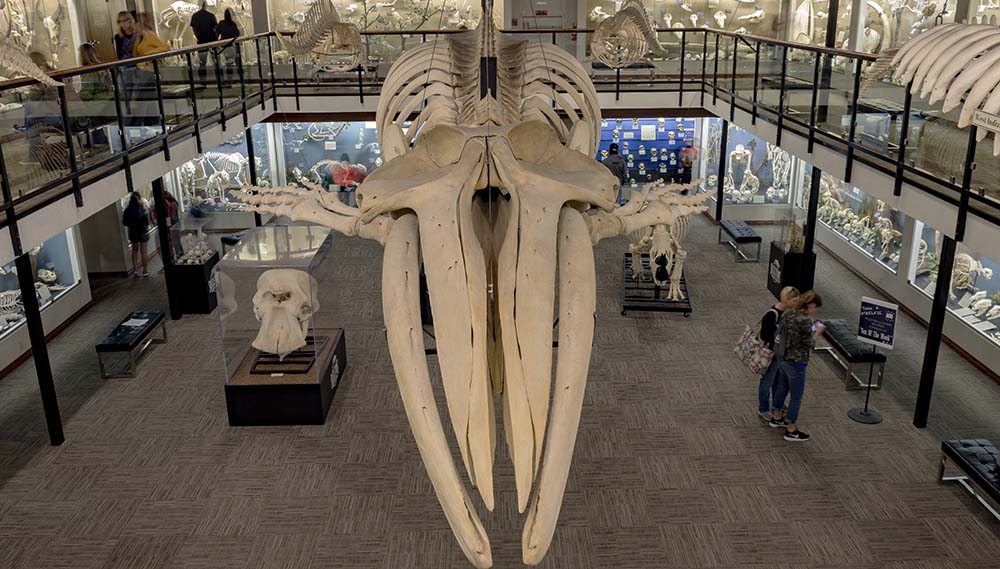It’s not unusual for a museum of natural history to have bones or fossils from extinct creatures. However, at Skeletons – Museum of Osteology, the remains on display are from species that can be found today.
At the Oklahoma City museum, you can see hundreds of skeletons of animals from all over the world – from hippos and rhinos to giraffes and dolphins, plus a few rare species.
“Our specimens are special because we still have the chance to see these animals alive in nature,” says Ashley Mason Burns-Meerschaert, the museum’s director of education. “One of the rarest specimens we have in our collection is a skull from 1880 of the critically endangered Javan rhinoceros. Today, there are only 67 known living Javan rhinos.”
One of Burns-Meerschaert’s favorite skeletons is that of a Komodo dragon, one of the first brought live to the United States.
“In order to legally import this animal, it was declared as a gift from the president of Indonesia to the president of the United States [then], George H.W. Bush,” Burns-Meerschaert says. “Originally thought to be a female, named Juanita, it was later discovered to be a male and his name was changed to Don Juan.”
Museum owner Jay Villemarette started collecting skulls early on.
“I found a dog skull in the woods when I was 7 years old on a day adventure with my father and brother,” he says. “I, of course, being 7, thought I’d found a human, so I went running back to my dad. He came over and assured us that it wasn’t a human, but he didn’t know what it was either. He encouraged me to collect the skull and take it home to find out what it was.”
Villemarette says his curiosity didn’t peak until a few years later when he found a cat skull and compared it to the skull he’d found.
“The differences and similarities between them intrigued me, and I started getting interested in learning about the animals,” he says. “Every time I got a new skull in my collection, it wasn’t about just having another skull on the shelf; it was about figuring out about the animal as a species.”
This interest eventually led him to start his own business selling and cleaning skulls. When expanding that business in 2010, he constructed a space for the Museum of Osteology.
Visitors can complete a scavenger hunt that introduces them to unique animals. Aside from learning animal facts, guests may walk away from the museum with an appreciation for the complexity of the natural world.
The only other known private museum of similar size and scope is also owned by Villemarette. The Museum of Osteology in Orlando, Florida, features 500 skeletons from different habitats. The skeletons on display at both museums are a fraction of Villemaratte’s collection of about 8,000 cataloged specimens, which are accessible to students, professors and researchers upon request. The museum also cleans and assembles all skeletons by hand.
“Our humpback whale skeleton took around two years to clean and 700 hours to assemble,” says Burns-Meerschaert.
The museum plans to start traveling exhibits to share with people across the country. For information, go to skeletonmuseum.com.






















